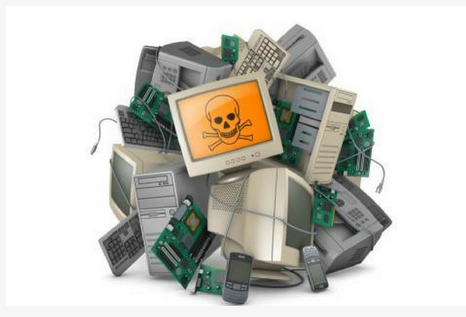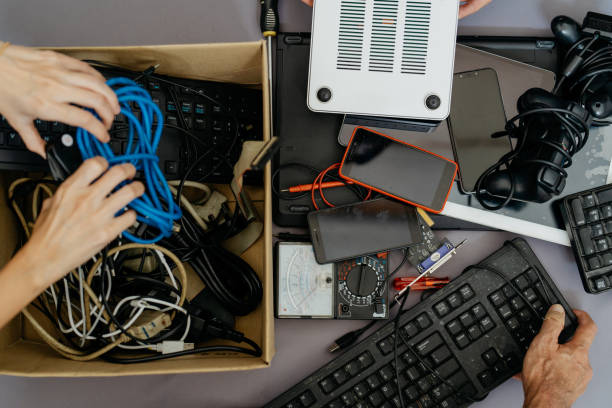E-Waste


What is E-waste?
Electronic waste (or e-waste) is a catch-all phrase used to describe discarded electronic, electrical or battery-operated goods. Typically, items include computer equipment, televisions, appliances, mobile phones, tools and a vast range of electronic items.

The Growing Problem of E-waste
There are large quantities of e-waste world-wide (predicted to reach 61 million tonnes by 2021) and this amount is growing at a rate of approximately 8% per year as manufacturers increase the choice of electronic items and decrease product lifespans (Global e-Waste Monitor). The bad news is that only around 20% of this huge amount of waste is being recycled.
A lot of e-waste contains heavy metals, in particular lead and mercury, and chemicals such as chlorofluorocarbons and flame retardants which attack the ozone layer.
These chemicals are extremely dangerous in our environment, causing contamination of our waterways, soil and air. Large volumes of e-waste going to landfill increases the problem significantly, resulting in non-reversable environmental pollution.
Therefore, Australia is facing increasing pressure to repurpose and recycle e-waste.
DROP OFF POINTS
You are more than welcome to drop off your e-waste, including
individual items at any of the following locations:
- Drop off point – 7/101 logan River Road Beenleigh, Queensland 4207
+61424197434 & Email: info@skyewastemanagement.com.au

The Recycling Solution
Australia (and the world) is facing a rapidly increasing e-waste disposal problem. We need to actively reduce the amount of e-waste being sent to landfill. The solution is recycling.
Recycling e-waste offers multiple benefits to the environment:
- Reduces the amount of landfill
- Reduces environmental pollution caused by dangerous substances ending up in our waterways, soil and air
- Allows recycling of valuable materials
«Fortunately, there is significant motivation to process e-waste as it is generally rich in precious metals – gold, silver and palladium – and base metals such as copper, aluminium and iron. Rare earth metals associated with batteries are also very high in economic value. Precious metals make up almost 80 per cent of the value of circuit boards and are many times richer than ores that we mine for these materials so, if separated from casings and other materials, they represent a very attractive ‘urban ore’» states Professor Geoffrey Brooks from Swinburne University.
A Sky eWaste Managment is at the forefront of tackling the e-waste issue via efficient and quick repurposing and responsible recycling of your e-waste.
Contact us today to discuss your needs +61424197434
Alternatively, you can drop off your e-waste at any of the following locations:
- Drop off point – 7/101 logan River Road Beenleigh, Queensland 4207

Hazardous Materials
A lot of e-waste contains heavy metals, in particular lead and mercury, and chemicals such as chlorofluorocarbons and flame retardants which attack the ozone layer.
These chemicals are extremely dangerous in our environment, causing contamination to our waterways, soil and air. Large volumes of e-waste going to landfill increases the problem significantly resulting in non-reversable environmental pollution

Valuable Materials
E-waste items also contain valuable materials that can be recycled.
Electrical goods contain a variety of valuable materials such as copper, zinc, gold, silver and platinum. While these metals only occur in small amounts, with the right methods they can be extracted, compounded and re-used.
Precious metals are non-renewable, so effective recycling is essential for continued re-use of these metals and components. It is extremely important for the environment and for the sustainability of our natural resources that we recycle these valuable materials.

In Australia e-waste is growing three times faster than other general waste streams. E-waste includes a variety of electrical or battery powered items that we use and discard from our homes and offices. Items include televisions, computers, mobile phones, appliances, tools and white goods. They contain both hazardous materials and chemicals, which are dangerous to the environment and humans, and valuable materials which are scarce and should be recovered and recycled.
Poor management of e-waste is hazardous to the environment and human health. Dumping and stockpiling of e-waste can result in fire and soil contamination. Dangerous chemicals leach into the soil over time and end up in our waterways causing irreversible damage.
